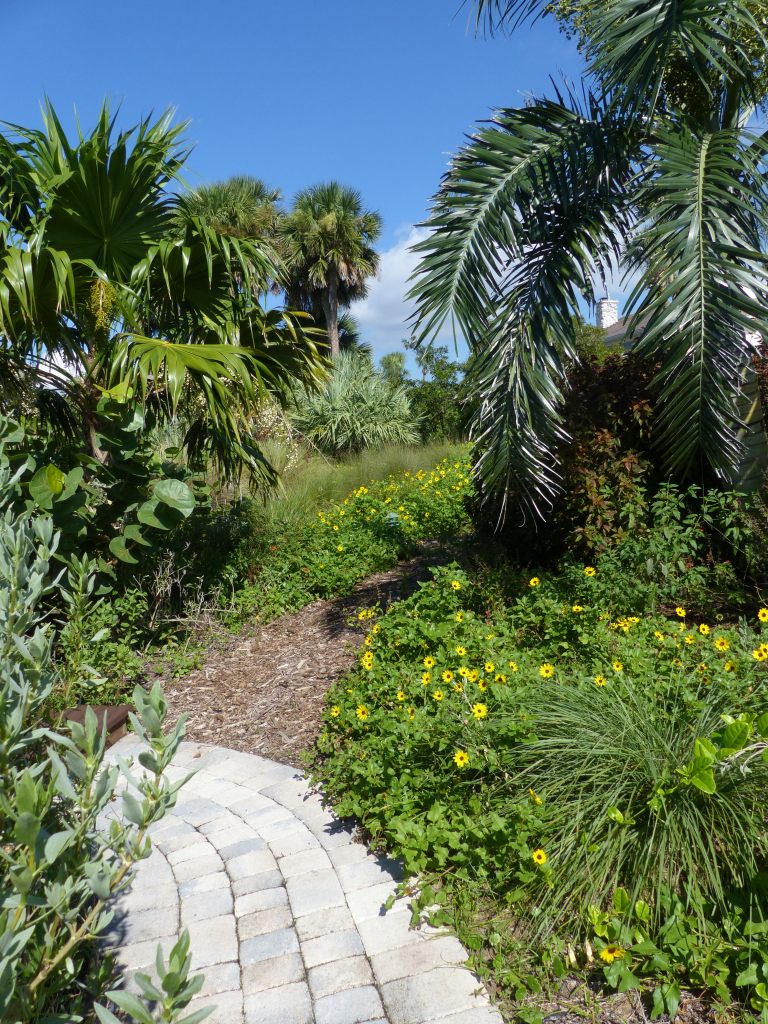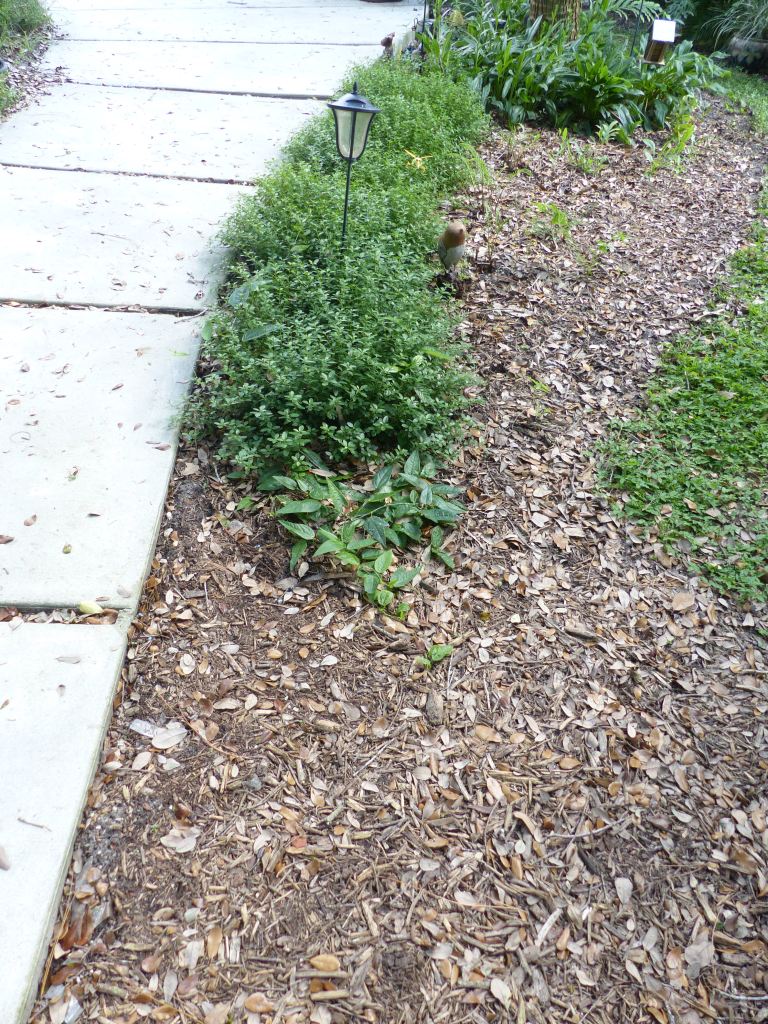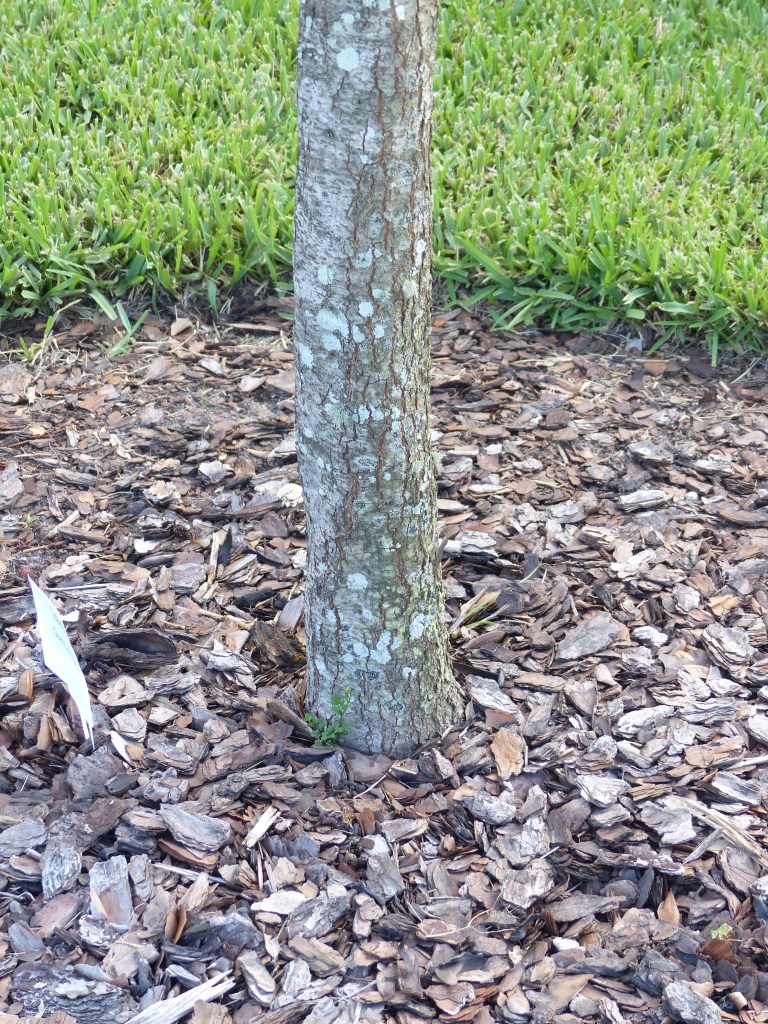Avoid the unsightly red volcano of mulch pictured above in a photo taken from afar from the yard of Marjorie Shropshire. Too much mulch can stifle root growth, and mulch placed against a plant trunk can be a pathway for pathogens and rot.
Organic mulch fortifies the soil when it breaks down, moderates soil temperature, and helps to diminish weeds, “Heavy” long-lasting mulches can prevent the seeds of wildflowers from germinating, however. Plus, ground-nesting, solitary native bees require spots of bare soil.
Take care when selecting your mulch. Some mulches like pine straw and pine bark are a by-product of pine plantations. Other mulches like melaleuca mulch and eucalyptus mulch are “made” from invasive trees. Avoid cypress mulch, since cypress wetlands are cut down to produce mulch. Click here to read a synopsis of University of Florida research on mulch.
Locally, mulched landscape material often is available from local municipalities or from companies that receive landscape “waste”. Be sure that the mulch is heat -“cured” to diminish the weed seed bank.
“Waste” really isn’t the right word for your leaves and other plant-based materials. The most sustainable practice is to use/”recycle” your yard materials.







